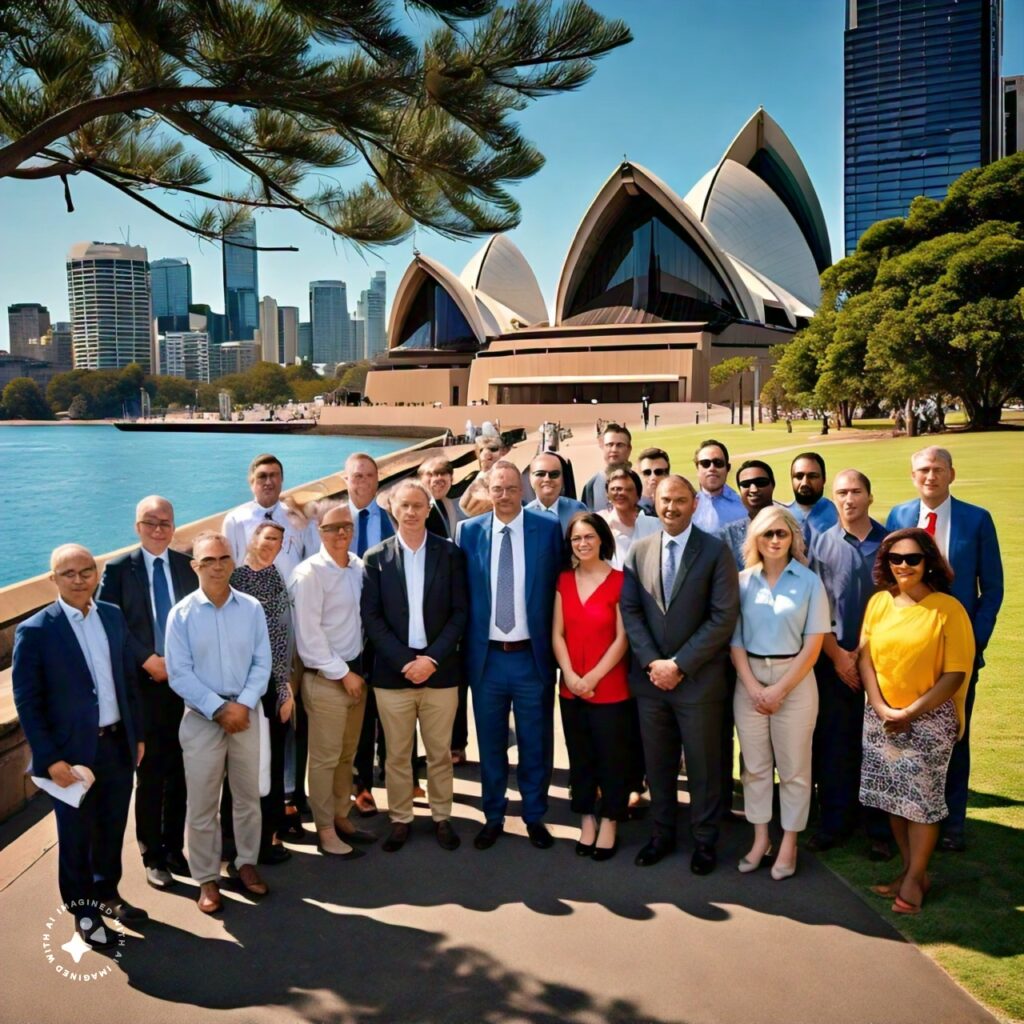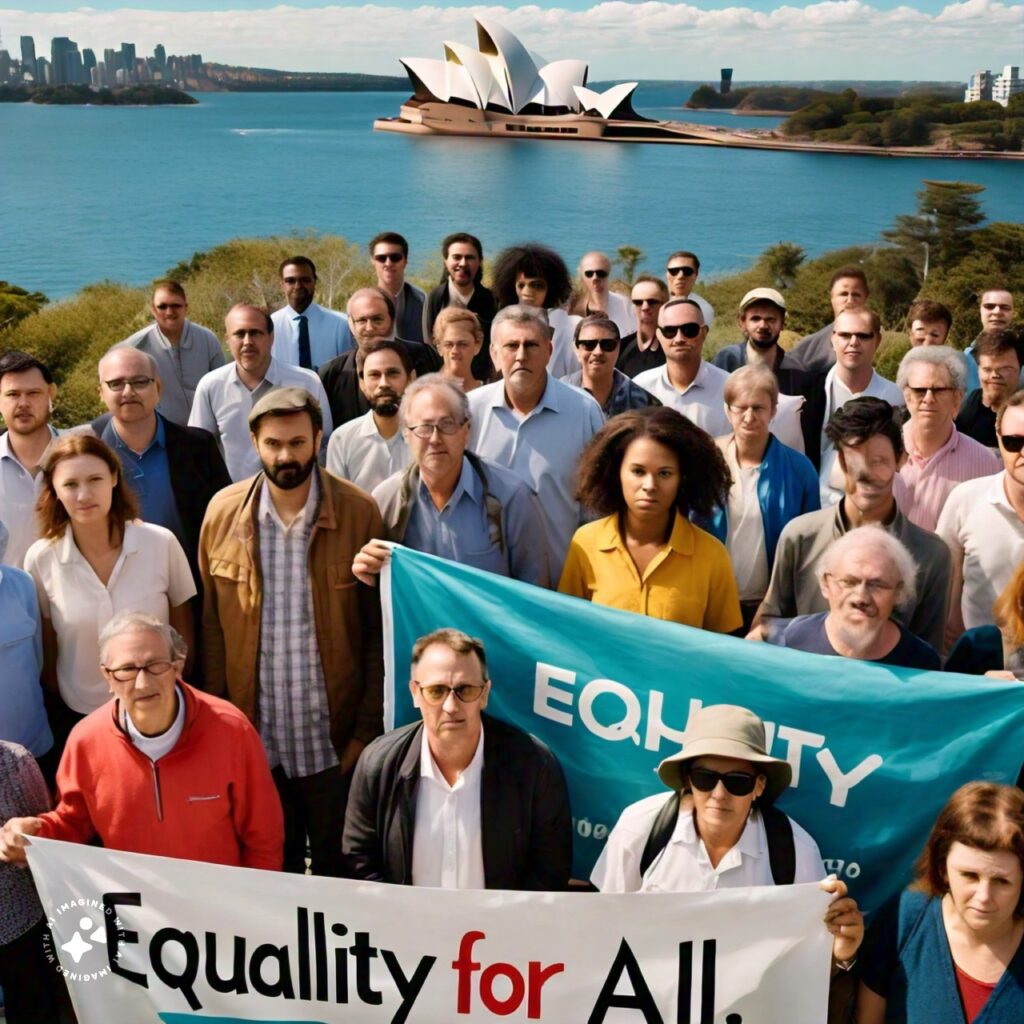Table of Contents
Explore the vibrant landscape of new migration strategy in Australia, drawing in seekers of prosperity, economic advancement, and cultural diversity. Embark on a journey through recent developments as the Australian government unveils a fresh approach to migration, designed to allure top-tier talent, foster regional growth, and adapt to the changing needs of the nation. Dive into the essence of the “New migration strategy in Australia” as we unravel its pivotal components and its potential impact on aspiring migrants.

Here are 7 New Migration Strategy in Australia
1. Skilled Migration:
Australia’s latest migration blueprint is laser-focused on drawing in top-notch talent primed to fuel the nation’s economic expansion. At the core of this strategy lies the Skilled Migration Program, encompassing sought-after visa subclasses like the General Skilled Migration (GSM), paving the way for skilled professionals to secure permanent residency Down Under. This forward-looking approach places a premium on occupations crucial to key sectors such as healthcare, engineering, IT, and trades, aligning with the nation’s growth trajectory. Explore how “Australia’s new migration strategy” is reshaping pathways for skilled workers to thrive and contribute to the country’s prosperity.
2. Regional Migration:
To promote balanced economic growth across the country, the new strategy focuses on regional migration. The Regional Sponsored Migration Scheme (RSMS) and the Skilled Regional (subclass 887) visa are designed to encourage migrants to settle and work in regional areas. These visas offer additional benefits such as priority processing, extended stay options, and potential pathways to permanent residency.
READ MORE: Discover How to Move to Luxembourg for Free: Your Ultimate Guide
3. Global Talent Visa:
Under the new strategy, Australia has introduced the Global Talent Visa program, which targets highly skilled individuals in specific sectors such as technology, science, engineering, and research. This streamlined pathway allows talented individuals to obtain permanent residency by demonstrating their exceptional abilities and potential to contribute to Australia’s innovation and growth.
4. Changes to Visa Requirements:
The migration strategy has brought several changes to visa requirements, including English language proficiency standards, skills assessments, and points-based systems. It is crucial for prospective migrants to understand and meet these requirements to maximize their chances of success. Additionally, the strategy aims to streamline visa processing to expedite the application process and improve efficiency.
READ MORE: Unlocking Your Gates: 10 Ultimate Guides on How to Secure a Netherlands Visa
5. Pathways to Permanent Residency:
Australia’s new migration strategy acknowledges the importance of offering pathways to permanent residency for skilled migrants. By meeting certain criteria, such as working in regional areas or contributing to specific industries, temporary visa holders may have opportunities to transition to permanent residency. This provides stability and long-term prospects for migrants who wish to settle permanently in Australia.
6. Focus on Innovation and Entrepreneurship:
Recognizing the significance of innovation and entrepreneurship in driving economic growth, the new strategy encourages individuals with innovative ideas, start-up businesses, or proven track records in entrepreneurship to explore visa options such as the Business Innovation and Investment Program. These pathways facilitate the establishment and development of innovative businesses in Australia.
7. Commitment to Diversity and Inclusion:
Australia’s migration strategy reaffirms the country’s commitment to multiculturalism, diversity, and inclusion. The government continues to prioritize family reunification, ensuring that families can be together in Australia. It also supports initiatives that promote cultural integration, language acquisition, and social cohesion, fostering a vibrant and harmonious society.

Here are some additional details on Australia’s new migration strategy
1. Priority Occupations:
The migration strategy identifies specific occupations that are in high demand in Australia. These occupations are listed on the Medium and Long-term Strategic Skills List (MLTSSL) and the Regional Occupation List (ROL). Skilled migrants with qualifications and work experience in these priority occupations have a higher chance of obtaining visas and permanent residency.
READ MORE: 7 Easiest Ways to Move to New Zealand: A Comprehensive Guide
2. Regional Development:
The focus on regional migration is aimed at addressing population growth and infrastructure demands in regional areas of Australia. The government offers incentives and benefits to migrants who choose to live and work in these regions. This includes access to more occupation opportunities, priority processing of visa applications, additional points in the points-based system, and potential pathways to permanent residency.
3. English Language Proficiency:
Proficiency in the English language remains an important requirement in the new migration strategy. Migrants are typically required to provide evidence of their English language skills through tests such as the International English Language Testing System (IELTS) or other approved English language tests. Meeting the required proficiency levels can significantly enhance the chances of a successful visa application.
4. Points-Based System:
Australia’s points-based system is used to assess the eligibility of skilled migrants applying for certain visas, such as the Skilled Independent visa (subclass 189) and the Skilled Nominated visa (subclass 190). The system allocates points based on factors such as age, qualifications, work experience, English language proficiency, and other relevant criteria. Meeting the minimum points threshold is essential for being considered for skilled migration.
5. Employer-Sponsored Visas:
The new migration strategy in Australia continues to prioritize employer-sponsored visas, such as the Temporary Skill Shortage visa (subclass 482) and the Employer Nomination Scheme (subclass 186). These visas enable Australian employers to sponsor skilled foreign workers to fill specific roles that cannot be filled by the local labor market.
6. Pathways for Graduates:
The migration strategy also provides opportunities for international students who have completed their studies in Australia. Graduates from Australian institutions may be eligible for post-study work visas, such as the Temporary Graduate visa (subclass 485), which allows them to gain work experience in Australia and potentially transition to permanent residency.
7. Regional Certifying Bodies:
As part of the regional migration focus, the new strategy involves regional certifying bodies that assess the genuine need for skilled workers in regional areas. These bodies provide advice and recommendations on the suitability of nominated positions and endorse applications for regional visas.
READ MORE: Effortless Relocation: Your Guide to the Easiest Way to Move to Canada in 2024
8. Ongoing Reviews and Updates:
Australia’s migration policies and plans are regularly reviewed and updated. Prospective migrants should stay up to date on any changes or upgrades to the migration system by visiting official government websites on a regular basis and talking with registered migration agents or immigration lawyers.
It is important to note that migration policies and plans might change over time, so when considering a move to Australia, study official government sources and seek expert guidance to ensure accurate and up-to-date information.
In Conclusion,
The new migration strategy in Australia plan reflects the country’s changing needs and aspirations. The strategy’s focus on attracting skilled persons, supporting regional development, and fostering innovation aims to accelerate economic growth and provide a prosperous future for both migrants and the nation. Prospective migrants considering Australia as a destination should carefully evaluate the new strategy’s requirements, possibilities, and pathways in order to make educated migration decisions.






